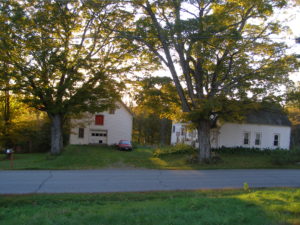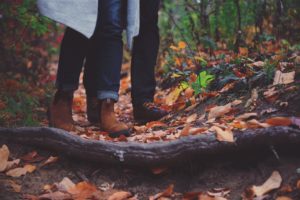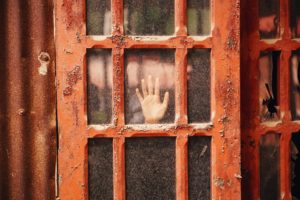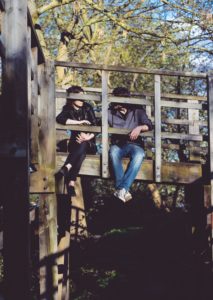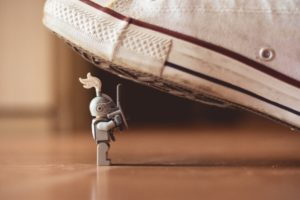Living Around the Bones
I first began thinking about bones 25 years ago when I was given a copy of Clarissa PInkola Estes’s book, Women Who Run With the Wolves. She writes about discovering stories of bone people in the Southwest. Bone people are old ones who collect bones in a desert between the worlds and bring dead animals and humans back to life.
Reanimation is a common creative and spiritual theme. Bones are like seeds; they are the remnants of life, and thus the base material from which to build new life. Bones are the simple starting point, the hidden scaffold and substance that survives.
Several times in my life I’ve found myself walking in a trackless emotional desert, alone, lost, frightened and injured. Old stories tell us during these times we must seek and gather our discarded, stolen and lost bones in order to call ourselves home.
Bones can be hard to see under layers of clothing, flesh, distraction and scar tissue. Perhaps that’s why it was the desert dwellers who kept bone people stories alive. The desert is clean and uncluttered, and the vast sky and sweep of land hold space for stillness and inward journeying.
Bone collecting is like treasure hunting. The first time I went bone collecting, I traveled backwards and excavated memories of my child self. I compared those memories to my adult life and began to sift for my bones, those indestructible pieces of self that have always been present, come what may, sustaining and shaping me from the beginning.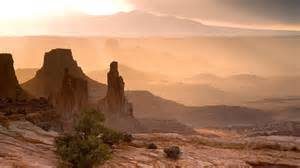
I discovered I’d thrown a lot of bones away over the years. Some I rejected because I judged them as ugly or misshapen. I refused to claim them. Others I grieved to discard, but I believed they were useless, unworthy and/or unlovable, so I dropped them and walked on without marking the spot where they lay.
The desert between the worlds has become a home to me now. The sands know the scent of the naked sole of my foot and the soaring vultures recognize my figure as I wander below them, insignificant as an ant. I’ve crawled and searched, remembered and listened for my whispered name when my missing bones feel me draw near. Some are broken and stained, incomplete fragments that no longer tell their entire story about me, but I’ve learned patience and persistence, and I save every shard and splinter. I’ve traveled miles in the desert to reclaim all those bones, groping my way through old memories, feelings and bits of conversation, sifting my bones from the garbage dump of words that did not belong to me, expectations, rules, beliefs and storm debris from storms that swept me up, though they were not mine.
Over and over, I’ve felt I’ve come to the end of everything, only to find a whole new horizon just a few steps away, at the top of a hill I didn’t know I was climbing. Each time that happens, I pause and inventory my bones. Bone collection has become an external practice as well as an internal one. I’m less and less interested in obscuring the essentials in my life with distraction, objects and complications.
This summer I have a new dimension of perception in discerning the bones of each day, each week and each season. Living simply as we do, having time to stretch out mentally, spiritually and creatively, I’m experiencing for the first time the joy of casting myself into a day with no list, no agenda, no expectations and lively curiosity.
This is, for me, a summer of wood. We’re clearing a knoll of land in order to build a cabin, thinning a grove of spindly alders and cutting an occasional small tree growing in the field which is our building site. As each tree falls, I haul it into the wall of forest surrounding the clearing. In the sunny field, the growth is waist-high, and as I drag trees through it, the sweet scent of milkweed mingles with the smell of fresh-cut wood. Wild cucumber catches at my feet, invisible in the thick growth, and I fall, and fall again, getting up hastily because, although my clothing is doused in bug repellent, rolling on the ground is a foolish exposure to ticks, not to mention rampant poison ivy.
In Maine in the summer, this kind of work is done in light-colored pants and long sleeves to protect from black flies, mosquitoes, poison ivy, nettles and the inevitable ticks. Five minutes of exertion leaves me sweating heavily under the necessary layer of clothing, breathless in the heavy, humid air.
Stepping from the field into the forest, the air cools and I’m shaded from the sun. Here, the undergrowth diminishes and mainly consists of huge ferns, but I still slip and fall, as the forest floor is littered with rotting tree debris and liberally scattered with moss-covered boulders and stones. I drag the cut trees in under the canopy so they can gradually rot and feed their living brethren and the rest of the forest system.
In the driveway, we are processing enormous piles of tree debris from trimming two live trees and from a fallen maple. The maples we trimmed provide us with welcome shade as we work. I fork wheelbarrow load after wheelbarrow load of twigs, small branches and dead leaves off the driveway and tip them over a steep hill out of sight below the house. My partner works with a chainsaw, and its snarl, along with the smell of cut wood, becomes one of this summer’s bones.
A generous neighbor loaned us his splitter, and once the maple (rock maple, which dulls chainsaws at an alarming rate) is cut into wood stove lengths, we heave the rounds onto the purring splitter, and the smell of the gas engine and sound of the relentless maul cleaving the wood becomes another of summer’s bones.
The healthy wood parts smoothly, revealing ivory, cream, and pinkish-red grain. The diseased wood breaks open, showing honeycombed defects, or crumbling, blackened rot that smells, oddly, like vomit. Heavy, thick bark peels from the wood like scabs as we work. Here in the driveway, I risk working in shorts with bare arms, but the wood is heavy and unwieldy and my legs and arms are bruised and scratched. The way I hold the rake invariably rubs a blister on my left thumb. We sweat through our clothes and I have to keep wiping my forehead and upper lip with my bare forearm and gloved wrist. Hard wood is heavy, especially when still wet, and the inside of my wrist is bruised from supporting two or three pieces as I carry firewood to the wheelbarrow, into the barn or into the cellar for stacking.
Some of this wood has been piled in the driveway for a year. As we work, we uncover an insultingly large woodchuck hole. We find a red salamander, about two inches long. My partner rescues a grass snake from a brush pile and relocates it away from the pitchfork tines. We accidentally lift away a shrew’s roof, and my partner catches the grey velvet covered creature in his gloved hand and releases it over the hill in a safe place. We brush away crickets, earwigs and worms. We split one huge round and little red ants swarm over it, hysterically collecting a broad swathe of exposed white eggs. My gloves are covered with them, and the ones who run fast crawl onto my arms and bite before I can brush them off. We set those pieces of wood aside before splitting them further to give the ants a chance to find a new nursery.
We have birdfeeders along the driveway, and the birds are the backbone of the summer days, stretching from dawn to dusk. As soon as we take a break from work, the woodpeckers gleefully swoop in for uncovered insect tidbits, and the nuthatches scurry up and down the trunks of the standing trees with their fluffy, uncoordinated offspring. The finches and sparrows return to the seed feeders from their observation posts high in the surrounding canopy.
Our resident chipmunk is so curious he can’t stay away, but as we disassemble all his best hidey holes he scolds endlessly, like a shrill and irritated metronome, glaring from under the hostas or the gap in the porch floor.
Strangely, the shy phoebes like best to nest in the barn, in spite of my partner frequently playing music and our wood stacking and other noisy activities. They arrow in and out of several broken windows when the barn is shut, but on days when we’re working, they use the same door we do. Because of them, the cool barn is not only a haven of shade, but free of flies and mosquitoes. We know where the nest is, but we’re careful to ignore it and whichever motionless parent is sitting on the eggs when we happen to be present. Even the nestlings are still and silent as stone when we enter. The phoebes are currently raising their second brood, and their first set of offspring darts all over the place, hunting insects and filling the days with their distinctive cry, which gives them their name.
The bones of summer in this place mingle with my own bones. We are a bruise, a scratch, a sticky film of sweat on the skin, a sly mosquito bite. We are birds strung on the lace of trees; the private life of snake, shrew, salamander and woodchuck; the determined persistence of insects. We are tree and water and moss-covered stone. We are the smell of rotten wood, of sweat, of blossom. We are the breeze in the tree, the sound of the phoebe questing for insects, the tapping woodpecker, the hunting hawk’s cry as it circles, and the clamor of the tools we use to work on our land.
The days saunter through the season, leading me forward by the hand, and I follow, stopping every now and then to collect and record the ravishing experience we call life in words, and each word is a miniscule bone, too, each page a scatter of tiny bony seeds that wait for warmth and light, water and the soil of life and death in order to take root, grow, blossom, fruit and die, again … and again … and again.
All content on this site ©2017
Jennifer Rose
except where otherwise noted
